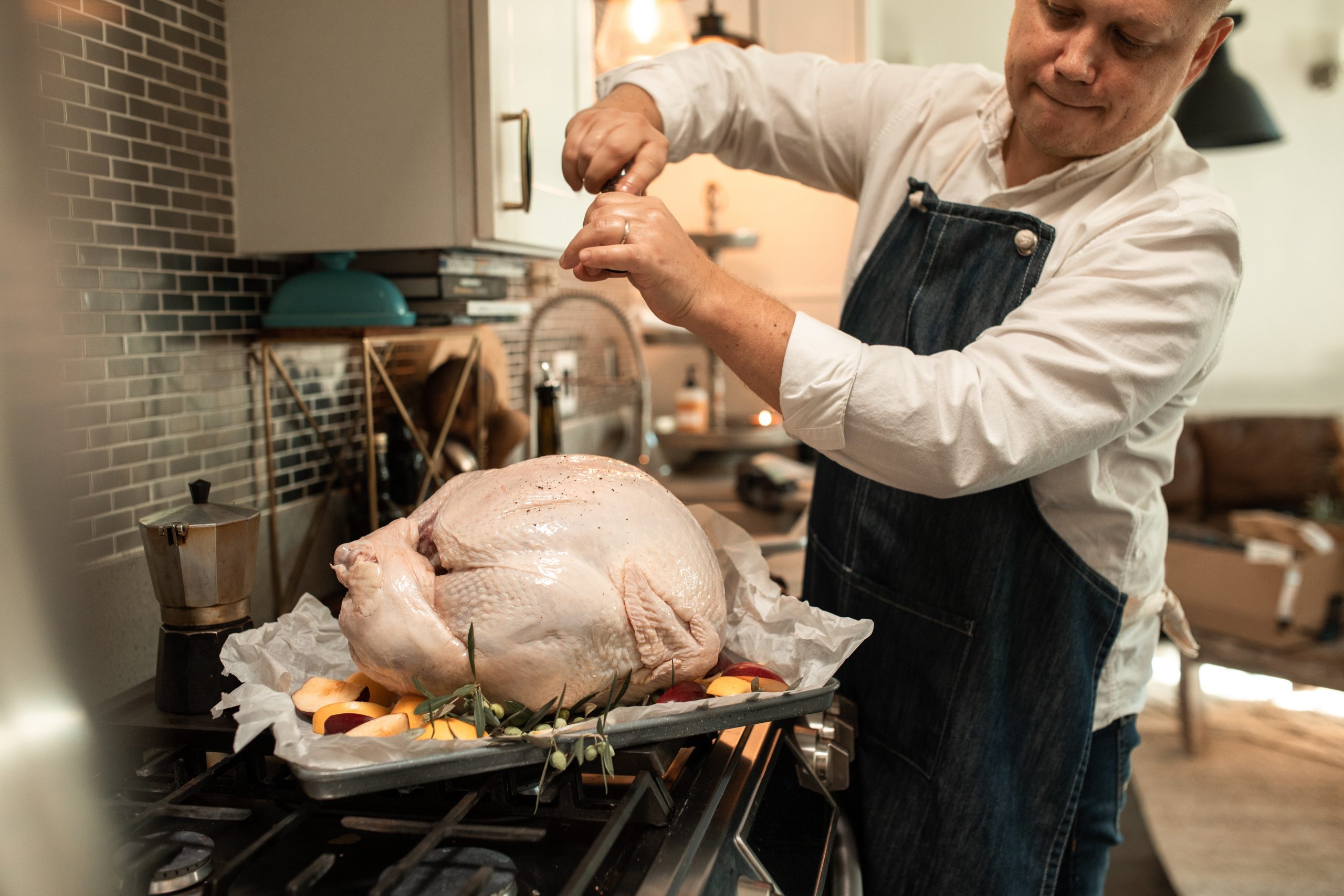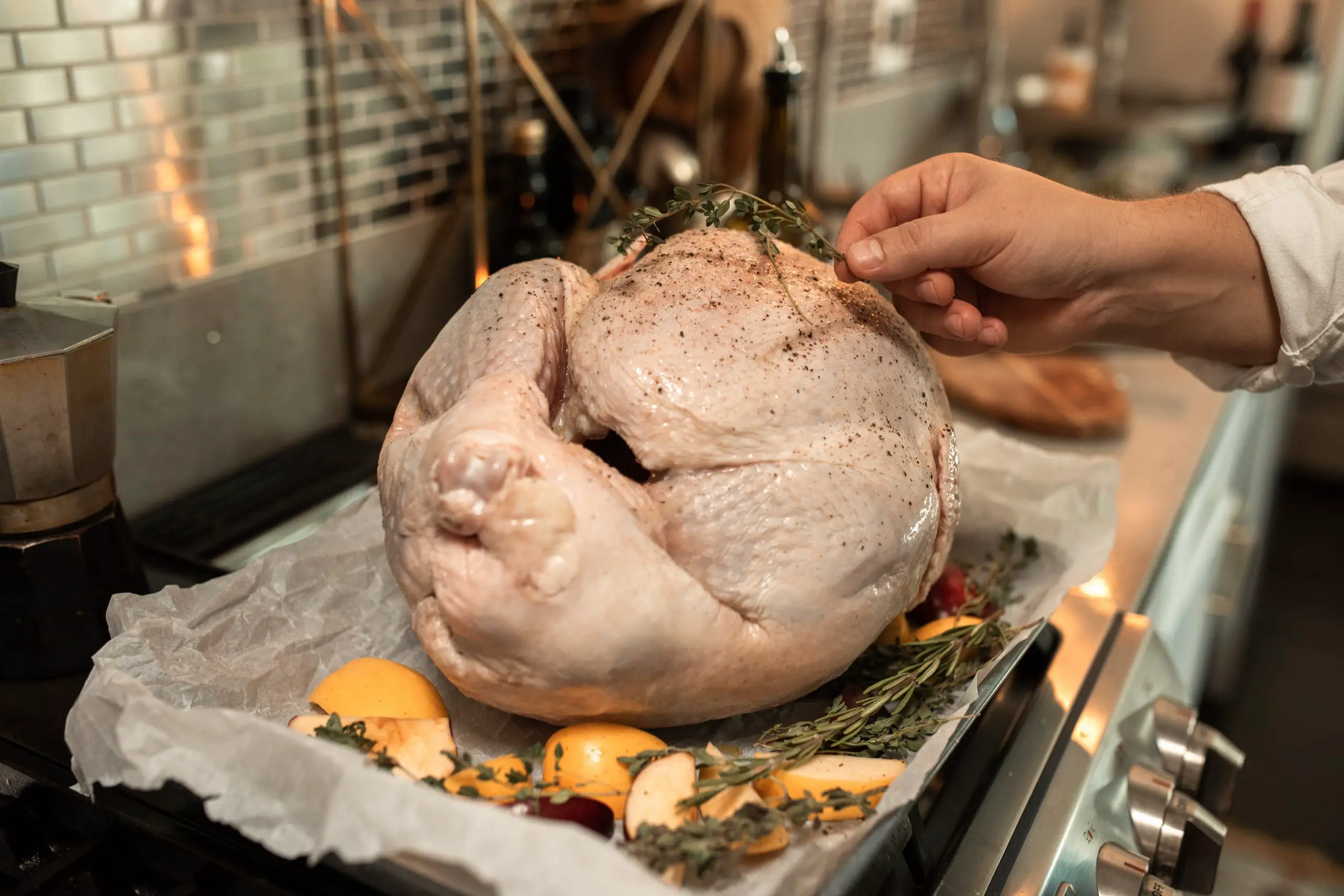If you’re going to prepare a turkey for your Thanksgiving dinner, there are certain things that you need to know before you start. Although thawing a turkey can take some time, preparing a tasty and secure Thanksgiving meal is necessary. The turkey must be properly thawed to cook evenly and achieve a safe internal temperature.
A turkey can be defrosted using various techniques, each of which has advantages and disadvantages. Therefore, planning and giving your turkey adequate time to thaw before you start cooking is crucial. In this article, we’ll go over how long it takes to thaw a turkey using each method and offer advice on how to do it safely and effectively.

How Long should you Thaw Turkey?
Thawing a turkey is crucial to making a wonderful and secure Thanksgiving meal. The thawing process must be done properly for the turkey to be cooked uniformly and reach a safe internal temperature. The general rule for thawing a turkey is to allow approximately 24 hours for every 4 to 5 pounds of turkey.
A 12-pound turkey, for instance, needs 3 to 4 days to defrost in the fridge, whereas a 20-pound turkey would need 4 to 5 days. Because speeding the procedure might result in uneven cooking and an increased risk of foodborne disease, it is crucial to plan and give the turkey enough time to defrost correctly.
There are several different methods for thawing a turkey. This involves washing your hands and surfaces properly, cooking the turkey to a safe internal temperature (165°F), and maintaining the turkey at a safe temperature (below 40°F) throughout the thawing process. Regardless of your approach, it’s critical to adhere to the correct food safety regulations to reduce your risk of contracting a foodborne illness.
Method 1. Thawing in the Refrigerator:
The best and safest way to defrost a turkey is with this technique. Place the turkey in the refrigerator in its original packaging, allowing 4 to 5 pounds of turkey to be every 24 hours to defrost. Although this process is time-consuming, it is the best approach to guarantee that the turkey thaws at a safe temperature (below 40°F).
Method 2. Thawing in Cold Water:
The turkey should be in a sink or a big container and covered with cold water. To maintain a chilly temperature, change the water every 30 minutes. This approach needs more care but is quicker than thawing in the refrigerator.
For each pound of turkey, let it around 30 minutes to thaw. Although this approach is quicker than refrigerator thawing, it is still crucial to monitor the turkey and ensure the water remains cold to reduce the possibility of bacterial growth.
Method 3. Thawing in the Microwave:
The quickest way of thawing, the microwave, is only effective with tiny turkeys or turkey breasts. This method is the fastest, but it is only suitable for small turkeys or breasts. For thawing instructions, refer to the owner’s manual for your microwave, and cook the turkey immediately. Using a microwave to thaw turkey can save time and energy.
However, you must follow all the proper safety procedures to ensure you get the safest and most nutritious results. It is not advised to thaw a whole turkey in the microwave since it is challenging to guarantee that the turkey will thaw evenly and to a safe internal temperature. Once you have determined your thawing time, place your turkey in a microwave-safe container. It is best to use glass or ceramic containers, but plastic ones are also microwave-safe.
Method 4. At Room Temperature
When thawing a turkey, it’s important to ensure it is safe to eat. The bacteria in the turkey can cause foodborne illnesses and toxins. These can multiply when the turkey is thawed. So, the best way to ensure that your turkey is safe to eat is to thaw it in the refrigerator.
The thawing of a turkey can take many hours. It depends on the bird’s size, the refrigerator’s temperature, and the freezer. If the bird is larger, the thawing process will be longer. Generally, a 15-pound turkey will take seven to eight hours to thaw.
Once the turkey has reached room temperature, it’s time to move on to the next step. The turkey should be placed in a baking dish. This will catch any juices that leak out while the bird is thawing. To ensure the turkey is thawed thoroughly, check it with a thermometer. Insert the thermometer under the skin in the thickest part of the breast.
Is it Acceptable to Let a Turkey Thaw Outside Overnight?
The prevailing consensus is that letting a turkey defrost outside is hazardous. The best places to defrost a turkey safely are in the fridge, the microwave, or a sink filled with cold water that is changed every 30 minutes.
The meat on a frozen turkey can develop bacteria if allowed to thaw outside at room temperature. If the meat is not cooked to a high enough temperature to destroy the bacteria, this can result in food poisoning. To lower the risk of foodborne illness, it is crucial to handle raw meat carefully.
It is preferable to use cold water or microwave methods to thaw a turkey quickly. These techniques will thaw the turkey quicker than the refrigerator method, but they also call for more care and attention to guarantee a healthy thaw.
Why does a Turkey Stay Moist?
A moist turkey can result from several circumstances, including Brining involves soaking a turkey in a salt-and-water solution before cooking it. When you bast a turkey, you spoon or brush liquids from the pan or other liquids onto the bird’s skin as it cooks—this aids in moisturizing the turkey, making for a tasty and moist bird. Providing moisture to the meat’s surface aids in keeping the turkey moist.
The breast should be covered: To prevent the breast meat from drying out during cooking, cover the turkey’s breast with foil or a sheet of parchment paper. By enabling the meat’s juices to flow evenly throughout, resting the turkey for at least 20 minutes after cooking can help it keep moisture. You can ensure that your turkey remains moist and tasty by following the advice in this article.
What is the Shelf Life of Thawed Turkey?
A thawed turkey’s shelf life is influenced by how it is stored and how long it is left to thaw. For the turkey to be safe for consumption, it’s critical to adhere to these instructions. It is preferable to dispose of the turkey to be safe if you are doubtful of its viability.
To avoid getting sick from eating bad meat, it is preferable to be cautious and discard a turkey that may be contaminated. Here are some recommendations regarding a thawed turkey’s shelf life:
- In the Refrigerator: Up to 4 days can pass before cooking a thawed turkey that has been placed in the refrigerator.
- In the Freezer: If a thawed turkey is properly wrapped and packed to avoid freezer burn, it can be kept in the freezer for up to six months.
- At Room Temperature: The maximum time a thawed turkey should be kept at room temperature is two hours. At room temperature, bacteria can develop on the turkey, making it unfit for consumption.
How can you Detect if Turkey has Gone Bad?
Tossing the turkey out if you are still determining if it is still edible is recommended. A potentially ruined turkey should be thrown out rather than taking a chance of becoming ill from eating damaged meat. There are several signs that a turkey has gone bad:
- Smell: The fragrance of fresh turkey shouldn’t be overpowering. The turkey can be spoilt if it has a strong, disagreeable odor.
- Appearance: The hue of fresh turkey should be pink or light. The turkey can be ruined if it has a slimy texture or is discolored.
- Feel: To the touch, the fresh turkey should feel firm. The turkey can be ruined if it is mushy or squishy.
- Date of expiration: To ensure the turkey is still fresh, look for the expiration date on the container.
What Happens if you Consume Spoiled Turkey?
A sickness brought on by ingesting food or drink contaminated with dangerous germs, viruses, or parasites is known as food poisoning, which can be brought on by eating a rotten turkey. Nausea, vomiting, diarrhea, pains in the abdomen, a fever, and dehydration are some of the signs of food poisoning.
In extreme circumstances, food poisoning may cause more severe side effects, including kidney failure, blood infections, and even death. Food must be handled and stored appropriately to lower the danger of food poisoning. If you think you may have consumed ruined turkey, it’s crucial to get checked out by a doctor and to heed their advice.
Conclusion
To sum up, thawing a turkey is crucial in putting together a healthy and delicious Thanksgiving meal. Depending on the size of the turkey and the thawing technique you use, it will take longer to defrost it.
Because speeding the procedure might result in uneven cooking and an increased risk of foodborne disease, it is crucial to plan and give the turkey enough time to defrost correctly. You can ensure that your turkey defrosts securely and in enough time for your holiday meal by adhering to the instructions in this article.

